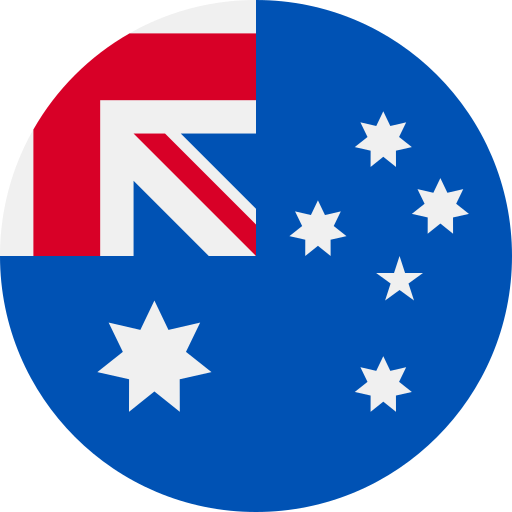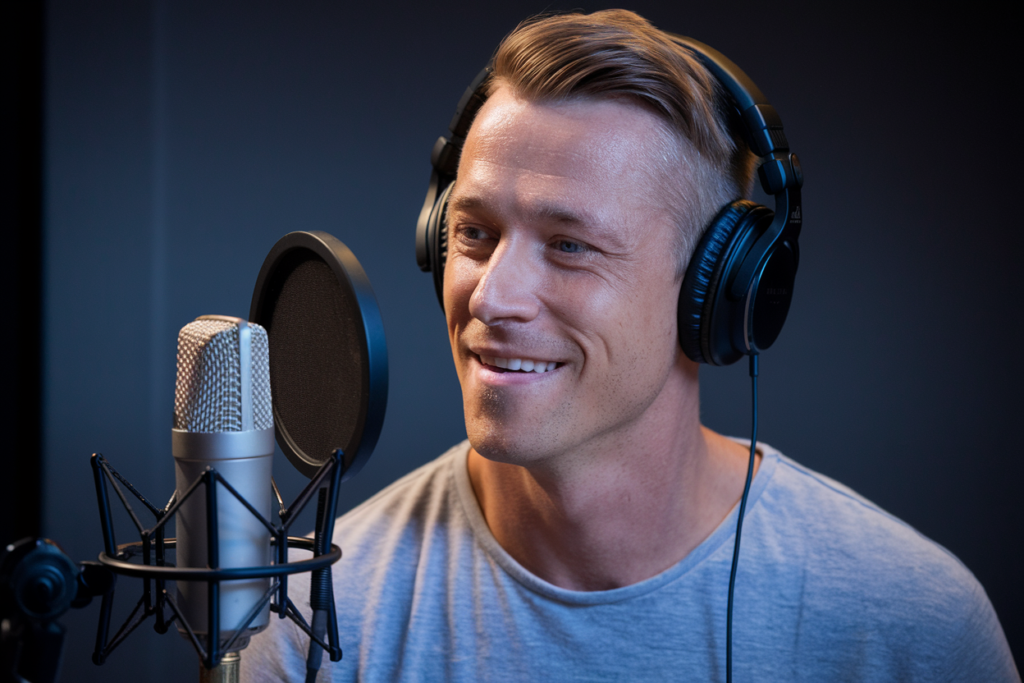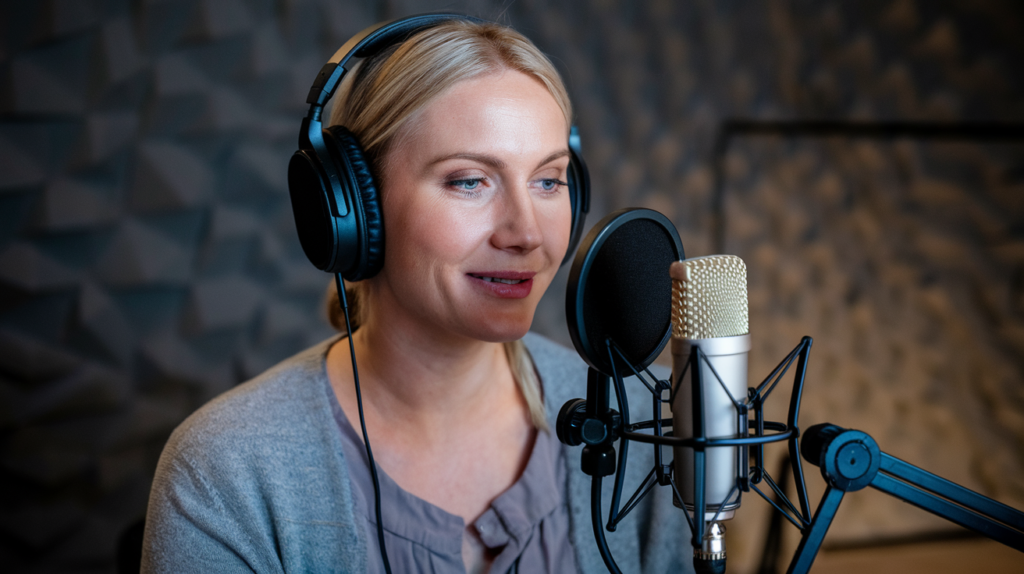Key Takeaways
- Unique Slang and Vocabulary: Australian English features distinct slang terms like „arvo” (afternoon) and „fair dinkum” (genuine), enhancing conversation but potentially confusing outsiders.
- Pronunciation Nuances: The accent combines elements from British and American influences, characterized by broader vowel sounds, creating a unique melodic quality in speech.
- Cultural Context: Understanding the cultural influences behind Australian slang and pronunciation is essential for effective communication in both casual and professional interactions.
- Comparison with Other Accents: Australian English differs significantly from British and American English in pronunciation, intonation patterns, and lexical choices, affecting how messages are conveyed across cultures.
- Importance for Voiceover Artists: Mastering these linguistic quirks is crucial for voice talent aiming to deliver authentic representations of Australian characters or narratives.
- Regional Variations: Within Australia itself, accents can vary widely between regions like Melbourne and Sydney, making it important to recognize these differences for accurate portrayals.
Ever wondered how Australian English stacks up against other accents? You’re not alone! With its unique slang and pronunciation, Aussie English can leave even the most seasoned travelers scratching their heads.
Understanding these differences isn’t just about impressing your friends with your knowledge of “Strine.” It’s crucial for effective communication whether you’re planning a trip down under or connecting with Aussie colleagues. Dive into the fascinating world of accents and discover what sets Australian English apart from the rest. You’ll gain insights that could change the way you interact in diverse conversations.
Overview of Australian English
Australian English features distinct characteristics that set it apart from other English dialects. Its unique slang, such as „arvo” for afternoon and „fair dinkum” for genuine, adds a colorful touch to conversations. You might find some terms puzzling if you’re unfamiliar with them.
Pronunciation also plays a crucial role in Australian English. The accent often combines elements from British and American influences but has its own unique twist. Vowel sounds tend to be broader, giving the language a melodic quality. For instance, the word „dance” is pronounced with an open vowel sound, unlike the clipped American version.
Understanding these nuances isn’t just beneficial for casual interactions; it’s essential for effective communication in professional settings too. Whether you’re working with Australian colleagues or engaging with clients down under, grasping these linguistic quirks can enhance your interaction experience.
For voiceover talent aiming to create authentic Australian characterizations, mastering this dialect is key. A skilled voice artist knows how to navigate these accents and phrases seamlessly, capturing the essence of Aussie culture while delivering clear messages tailored to their audience’s expectations.
Familiarizing yourself with Australian English enriches your overall communication skills and opens doors in diverse contexts—be it travel or work-related discussions. With practice and exposure, you’ll find yourself becoming more comfortable conversing in this vibrant dialect.
Characteristics of Australian English
Australian English features distinct slang and pronunciation that set it apart from other forms of English. Familiarity with these characteristics enhances your communication skills, especially if you work with voiceover talent or engage in professional settings.
Pronunciation Features
Australian English boasts a unique melodic quality, characterized by broader vowel sounds compared to American English. You might notice that Australians often shorten words; for instance, “afternoon” becomes “arvo.” Intonation patterns can vary significantly as well, creating a sing-song effect in casual conversation. These pronunciation traits not only add flavor but also require attention for accurate voiceovers aimed at capturing authentic Australian characters.
Vocabulary Differences
Vocabulary in Australian English includes colorful slang terms that might surprise you. Phrases like „fair dinkum” signify something genuine while „bikkie” refers to a biscuit or cookie. Understanding this vocabulary is crucial for effective communication, whether you’re discussing projects with colleagues or crafting scripts as a voice artist. Using the right phrases can enhance relatability and engagement when delivering content intended for an Australian audience.
Comparison with British English
Australian English showcases distinct features when compared to British English, particularly in pronunciation and vocabulary. Understanding these differences enhances communication, whether you’re engaging in a casual chat or working on professional projects.
Accent Variations
Accent variations between Australian and British English can be striking. Australians often pronounce vowels more openly, creating a unique melodic quality. For example, the word „mate” sounds different than its British counterpart. You’ll notice that some Australians drop consonants at the end of words or blend them together, leading to accents that can vary significantly even within Australia itself. This diversity impacts how voice artists approach their work. Recognizing these nuances is crucial for voice talent tasked with delivering authentic performances.
Cultural Influences
Cultural influences shape language use in both Australian and British contexts. Australian slang reflects the country’s laid-back lifestyle and diverse population, showcasing terms like „arvo” for afternoon and „brekkie” for breakfast. These expressions may not have direct equivalents in British English but add vibrancy to conversations. For voiceover actors aiming to connect with an audience, familiarity with such cultural references enriches their delivery style and makes content relatable.
Understanding these elements of Australian versus British English not only aids effective communication but also enhances your ability to engage audiences through compelling narratives delivered by skilled voice talents.
Comparison with American English
Australian English and American English differ in several ways, impacting communication styles across both cultures. Recognizing these distinctions enhances interactions, especially in professional contexts.
Pronunciation and Intonation
Pronunciation stands out as a key difference between Australian and American English. Australians often pronounce vowels more openly, giving their speech a distinct melodic quality. For instance, the word „mate” might sound more like „mait” to an American ear. Intonation patterns also vary; Australians tend to use a rising intonation at the end of statements, creating a sing-song effect that may confuse listeners from other regions. This unique pronunciation not only shapes casual conversations but also influences how voice talent must adapt their delivery for authenticity in various projects.
Lexical Choices
Lexical choices further differentiate Australian and American English, affecting vocabulary usage in everyday conversation. Australians frequently employ slang terms that don’t have direct equivalents in American English. Words like „bikkie” for biscuit or „arvo” for afternoon reflect cultural nuances that can enhance relatability when connecting with an Australian audience. Understanding these lexical variations is crucial for voice actors aiming to deliver authentic portrayals or narratives tailored to specific markets. Using appropriate terminology fosters engagement and demonstrates cultural awareness—valuable traits for any voiceover project requiring regional authenticity.
Comparison with Other Global Accents
When comparing Australian English to other global accents, distinct features emerge that highlight its unique charm. British English shares some similarities but differs in pronunciation and vocabulary. Australians often pronounce vowels more openly, while British speakers may articulate consonants more clearly. This divergence can create challenges for voice actors trying to capture the essence of a character from Australia versus one from the UK.
American English also stands apart in several ways. Australians frequently use a rising intonation pattern that lends a melodic quality to their speech. This can confuse American listeners who expect a different rhythm and flow. Additionally, slang terms used by Australians often lack direct equivalents in American dialects, making it essential for voice artists to familiarize themselves with these nuances.
Diving into specific examples enriches your understanding of these differences. For instance, consider how „brekkie” means breakfast in Aussie slang—a term that simply doesn’t exist in American vernacular. Similarly, the phrase „arvo” refers to afternoon, reflecting Australia’s laid-back culture while also providing a lively touch to conversations.
Understanding these nuances is crucial for voiceover talent aiming for authenticity in their work. Whether you’re crafting characters or narrating scripts set in Australia, knowing how accents shape interactions helps you connect better with audiences. Engaging with local expressions not only enhances relatability but also demonstrates cultural awareness—an invaluable trait for any skilled voice actor.
Accents within Australia showcase further diversity as well; regions like Melbourne and Sydney have distinct sounds that even seasoned travelers might struggle to differentiate at times. Being aware of these variations aids voiceover professionals in delivering performances tailored accurately to specific Australian contexts.
Engaging with the intricacies of Australian English against other accents deepens your skill set as a voice artist or actor. By embracing these differences, you enhance communication strategies and create compelling narratives that resonate across cultures.
Conclusion
Embracing the quirks of Australian English can transform your interactions and enhance your understanding of this vibrant culture. By familiarizing yourself with unique slang terms and pronunciation patterns, you’re better equipped to engage in meaningful conversations whether you’re traveling or working with Australians.
These linguistic nuances not only enrich communication but also foster connections that go beyond mere words. So dive into the world of Aussie English and let it add a new layer to your conversational toolkit. You’ll find that appreciating these differences opens up opportunities for authentic engagement both personally and professionally.
Frequently Asked Questions
What is Australian English?
Australian English is a distinct variety of English characterized by unique slang, pronunciation, and vocabulary. It incorporates terms and phrases that may confuse non-native speakers, making it essential for effective communication in both casual and professional contexts.
Why is understanding Australian slang important?
Understanding Australian slang enhances communication with locals and colleagues. Familiarity with terms like „arvo” (afternoon) and „fair dinkum” (genuine) improves relatability, making conversations more engaging.
How does Australian pronunciation differ from American English?
Australian pronunciation features broader vowel sounds and a melodic intonation pattern. This can create a sing-song effect that differs significantly from the flatter tones often heard in American English.
Are there significant differences between Australian and British English?
Yes, while they share some similarities, Australian English has distinct vocabulary and pronunciation characteristics. For example, Australians drop consonants more frequently than Brits do.
How does cultural influence shape Aussie slang?
Australian slang reflects the country’s laid-back lifestyle and diverse population. Terms like „brekkie” (breakfast) showcase this vibrancy and often lack direct equivalents in other dialects.
Why should voice actors understand these linguistic nuances?
Voice actors must grasp the subtleties of Australian English to deliver authentic performances. Using appropriate terminology fosters audience engagement and demonstrates cultural awareness tailored to specific markets.
What are some common examples of Aussie slang?
Common examples include „bikkie” for biscuit or cookie, „arvo” for afternoon, and „brekkie” for breakfast. These terms add flavor to conversations but may be unfamiliar to outsiders.
How do accents vary within Australia?
Accents vary considerably across regions in Australia; cities like Melbourne and Sydney have their own distinctive sounds. Recognizing these variations can aid voiceover professionals in delivering accurate portrayals tailored to local audiences.







